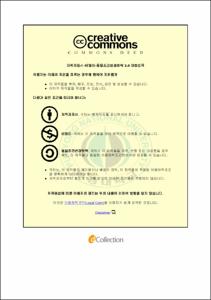반응표면모델을 이용한 마그네슘 합금의 자기연마 공정변수 최적화 및 예측모델 개발
- Alternative Title
- Development of prediction model and optimization for MAP of magnesium alloy using response surface model
- Abstract
- 마그네슘은 밀도가 1.74g/㎤으로 실용금속 중 가장 가벼운 금속으로 알려져 있다. 뿐만 아니라 비강도, 치수안정성, 기계가공성, 진동흡수성 및 전자파 차폐성이 우수하여 수송 기계 및 전자제품 등의 구조용 재료로 각광 받고 있다. 그러나 마그네슘 자체가 지니는 높은 산화성 및 폭발성 그리고 해수 및 대기에 의한 내식성 불량은 마그네슘 합금의 사용범위를 제한시키고 있다. 이러한 단점의 보완을 위해 반드시 표면처리가 필요한 실정이다. 특히, 마그네슘 합금을 이용한 제품 재료의 경우 매우 얇은 두께를 지니는 판재제품이 대다수이다. 이 같은 재료는 특성상 효과적인 표면처리를 위한 연마 가공이 매우 어렵고 폭발성의 위험이 산재해 있다. 따라서 위와 같은 문제점들을 해결함과 동시에 고품위의 표면을 얻기 위하여 마그네슘 합금의 자기연마법 개발이 진행되고 있다. 그러나 마그네슘 합금의 경우 비자성 소재로서 자기력에 영향이 약하다. 이러한 특징으로 인해 마그네슘 합금의 자기연마 공정에 전자석을 이용하여 자기력을 향상시키는 방안이 적용되어 자기연마 효율을 높인바 있다. 본 연구에서는 이러한 마그네슘 합금의 자기연마 공정 최적화를 위해 실험계획법을 이용하여 각 공정인자들의 특성을 파악하고 S/N비 및 반응표면모델을 이용하여 예측모델을 개발하여 이를 평가하고 검증하였다.
Magnesium alloys are the lightest currently used as structural metals and honored as the 21stcentury green structural material. Owing to many advantages such as excellent mechanical properties, good machinability, good electromagnetic shielding characteristic and high dimensional stability, magnesium alloys have great application potential in aerospace, automobile and electronic device fields. With the development of these industries, more precise surface of magnesium materials is naturally needed to meet the high quality of products. However, there are some limitations in producing good surface for magnesium materials due to fundamental problems such as flammability hazard and fragility properties.
Magnetic abrasive polishing(MAP) was proposed as one of non-traditional techniques to overcome these difficulties. In the MAP process, a polishing tool that consists of ferrous particles and non-ferrous abrasives under silicone oil medium has flexibility. This flexible tool can remove a very small amount of materials from a workpiece and then a better surface can be produced after polishing the workpiece without damages on the surface. Nevertheless, it is very difficult to adopt MAP for polishing of non-magnetic materials because magnetic force on the working field determine the efficiency of this process. Therefore, it is necessary to improve magnetic force on artificially the surface of non-magnetic material during MAP process. Kwak showed that improving strategy of magnetic force using permanent magnet, which installed in the opposite side of non-magnetic material, was very effective for enhancing the surface roughness and the rotational speed of the magnetic tool had a dominant effect on the improvement of surface roughness in the case of polishing of thin magnesium plate with the permanent magnet. Wang has developed a novel magnetic abrasive medium to resolve the efficiency and recycling problem of the magnetic abrasive finishing (MAF) of an inner pipe using the silicone gel to mix steel grit and silicone carbon. As a result of study, the silicone gel abrasive had a good effect on the surface roughness and the material removal rate, especially in the non-magnetic field. Therefore, silicone gel medium is very useful to MAP of non-magnetic materials since it could constrain iron powder and abrasives efficiently.
In this study, the second generation magnetic abrasive polishing process, which consists of electro-magnet array table and magnetic abrasives mixed with silicone gel medium, was developed to improve the magnetic force for MAP of AZ31B magnesium alloy. The large number of process parameters affect on the surface roughness of non-magnetic materials after second generation MAP more than the conventional MAP process. Therefore, evaluation and optimization of process parameters such as current of magnetic array table was performed on basis of design of experiment. Moreover, the prediction models using response surface method and signal to noise ratio were developed to predict the enhanced surface roughness in the second generation MAP of AZ31B magnesium alloy.
- Issued Date
- 2012
- Awarded Date
- 2012. 2
- Type
- Dissertation
- Publisher
- 부경대학교 산업대학원
- Alternative Author(s)
- Son, Chul-Bae
- Affiliation
- 한국정밀(주)
- Department
- 산업대학원 기계공학과
- Advisor
- 곽재섭
- Table Of Contents
- Nomenclature ⅲ
List of tables ⅳ
List of figures ⅴ
List of photographs ⅶ
1. 서 론 1
1.1 연구의 필요성 및 목적 1
1.2 연구동향 3
1.3 논문의 구성 4
2. 이론적 배경 5
2.1 마그네슘재료의 특성 5
2.2 자기연마의 원리 7
2.2.1 자기연마재에 작용하는 자력 8
2.2.2 자력에 의한 연마압력 11
2.2.3 가공 메커니즘 14
2.3 실험계획법 18
2.4 반응표면모델 21
3. 실험계획법을 이용한 공정특성평가 28
3.1 실험의 구성 28
3.1.1 전자석 테이블을 이용한 자기력향상 28
3.1.2 실험장치의 구성 32
3.2 실험계획법을 이용한 실험 34
3.3 실험의 결과 및 평가 37
3.4 분산분석 44
4. 예측모델의 개발 45
4.1 S/N비를 이용한 예측모델 45
4.2 반응표면모델을 이용한 예측모델 47
5. 결 론 53
REFERENCES 55
ABSTRACT 59
- Degree
- Master
- Files in This Item:
-
-
Download
 반응표면모델을 이용한 마그네슘 합금의 자기연마 공정변수 최적화 및 예측모델 개발.pdf
기타 데이터 / 4.94 MB / Adobe PDF
반응표면모델을 이용한 마그네슘 합금의 자기연마 공정변수 최적화 및 예측모델 개발.pdf
기타 데이터 / 4.94 MB / Adobe PDF
-
Items in Repository are protected by copyright, with all rights reserved, unless otherwise indicated.